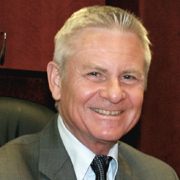| 1. | How to Apply |
| 2. | Online Application Form |
| 3. | Download a Catalog |
| 4. | Entrance Requirements |

David Nunan, Ph.D
Director, David Nunan TESOL Institute

Master of Arts in TESOL Designer
Senior Professor: TESOL
Dr. David Nunan is the Director of the Anaheim University David Nunan TESOL Institute and Senior Professor of TESOL for the Anaheim University Graduate School of Education. He was the founding Dean of the Anaheim University Graduate School of Education and previously served as President of Anaheim University from 2006 to 2008 and as Vice-President for Academic Affairs from 2008 to 2013. Dr. David Nunan is former president of TESOL, the world's largest language-teaching organization. Dr. Nunan...
Learn More
Jimalee Sowell, M.A.
 Jimalee Sowell, MA
Jimalee Sowell, MA
Certificate Program Coordinator, David Nunan TESOL Institute
Instructor: TESOL
Jimalee Sowell is a Ph.D. candidate in Composition and Applied Linguistics at Indiana University of Pennsylvania and holds an MATESOL degree from SIT Graduate Institute. Ms. Sowell has worked as an English language teacher and teacher trainer since 2000. Ms. Sowell has worked in a variety of contexts including South Korea, Malaysia, Bangladesh, Ecuador, Uganda, Cambodia, Vietnam, and Côte d’Ivoire. Her research interests include writing instruction, peace education, genre analysis, disability...
Learn MoreRead More
The AU Diploma in TESOL degree program allows you to study online while working full time and fulfilling your personal responsibilities. All four courses in the program are taught 100% online.
Each course is 15 weeks long. New courses begin on the first Monday of each month. The Undergraduate Diploma in TESOL program will take about 60 weeks to complete.
Below is a suggested guideline for weekly study:
| Weekly Study Format | |
| 150 minutes | video lecture & Powerpoint presentation (view video, review Powerpoint, take notes) |
| 150 minutes | background reading |
| 120 minutes | preparation of responses to discussion questions and tasks |
| 90 minutes | discussion forum |
| 30 minutes | online quiz |
| 9 hours | per week total |
| Duration: 15 weeks x 9 hours per week = 135-hour course | |
Read More
The Diploma in Teaching English to Speakers of Other Languages has two main aims: (i) to explore the structure, grammar and phonology of the English language and (ii) to help prospective teachers increase their knowledge and understanding of teaching techniques and methodologies and develop their teaching skills.
The non-credit program examines English language teaching in relation to methods, assessment and evaluation, and materials development by:
- Developing knowledge of the structure and grammar of English for use in the language teaching setting.
- Increasing understanding of effective English language teaching methodologies.
- Examining principles, issues and trends in English language learning and teaching in a range of learning contexts.
Introduction to TESOL
This program is designed for language teachers, teachers in preparation or intending teachers. It offers a practical introduction to language teaching and links practice to theory and research. The program offers students the opportunity of developing a solid pedagogical foundation through instruction in the following areas: language teaching methodology, listening, speaking, reading, writing, pronunciation, vocabulary, grammar, discourse, content-based instruction, using coursebooks, computer assisted language learning, learning styles and strategies, learner autonomy in the classroom, classroom-based assessment, and cross-cultural communication.
English Language Teaching Methodology
When someone teaches, they usually employ a range of activities in certain conditions that form an approach. When an approach has a theoretical background to it, it is a methodology. In this course, we look at different methodologies for TESOL, with an emphasis on the theory, principles, and procedures of the Communicative Method. However, in practice, most teachers employ a range of methodologies.
English Language Teaching Assessment
Assessment is an essential part of the teaching and learning process. Assessment not only identifies learners’ strengths and weaknesses, it also identifies strengths and weaknesses in teaching and learning materials. In this course, we explore how assessment can be used in a formative sense, to help evaluate learners’ performance, as well as in the summative sense, where assessments are used to determine the effectiveness of teaching and learning. In this course, we review the role of assessment and examine ways to ensure that assessment is fair and effectively and efficiently reflects both teaching and learning.
Material Development in English Language Teaching
Materials development is concerned with all the resources available for helping the teaching and learning process. These resources include professionally printed products such as textbooks, activity books & teacher guides as well as CD-ROM, DVD, and online computer resources. Resources also include those materials created by teachers & students. In this course, we review various re- source options, discuss their advantages & disadvantages, and outline ways in which teachers can both use and create effective and efficient materials to help in the teaching and learning process.
Undergraduate Diploma in TESOL Course Schedule 2025
New courses begin on the first Monday of the month.
| Tuesday, January 6, 2025 |
Monday, |
| Monday, February 3, 2025 |
Monday, August 4, 2025 |
| Monday, March 3, 2025 |
Monday, September 1, 2025 |
| Monday, April 7, 2025 |
Monday, October 6, 2025 |
| Monday, May 5, 2025 |
Monday, November 3, 2025 |
| Monday, June 2, 2025 |
Monday, December 1, 2025 |
Undergraduate Diploma in TESOL Program Fees
Affordable Pay-As-You-Learn System: Pay for only one course at a time.
| Application and Registration Fees | |
|---|---|
| Application Fee (Non-refundable after 7 days) |
$ 50 |
| Registration Fee (Non-refundable after 7 days) |
$ 100 |
| STRF Fee* (non-refundable, CA residents only) | $ 0 |
| Per Course Fees | |
| Tuition Fee | $1,050 / course taken |
| Records Fee | $ 50 / course taken |
| Digital Textbook | $ 20 / course taken |
| Per Course Fee Total: | $1,120 |
| Diploma | No cost |
| Replacement Diploma | $ 100 (optional) |
| Replacement Cover | $ 100 (optional) |
| Course Completion Letter | $ 35 (optional) |
| Program Total | $4,630* |
**Assumes completion in 4 terms.
*Student Tuition Recovery Fund (STRF): The Student Tuition Recovery Fund (STRF) is administered by the California BPPE and applies only to California residents. The STRF fee is currently zero ($0) per one thousand dollars ($1,000) of institutional charges The State of California established the Student Tuition Recovery Fund (STRF) to relieve or mitigate economic loss suffered by a student in an educational program at a qualifying institution, who is or was a California resident while enrolled or was enrolled in a residency program, if the student enrolled in the institution, prepaid tuition, and suffered an economic loss. Unless relieved of the obligation to do so, you must pay the state-imposed assessment for the STRF, or it must be paid on your behalf, if you are a student in an educational program, who is a California resident, or are enrolled in a residency program, and prepay all or part of your tuition. You are not eligible for protection from the STRF and you are not required to pay the STRF assessment, if you are not a California resident, or are not enrolled in a residency program.
Tuition may be paid on a course-by-course basis.
Students interested in inquiring about non-interest-bearing monthly payment plan options should e-mail registrar @ anaheim.edu
Students may make payment by check, credit card (Visa, MasterCard, American Express, or Discover), money order, or bank transfer (the student is responsible for any transaction fees imposed by the institution).
Please e-mail registrar @ anaheim.edu for information on how to make payments.
* An extension may be granted by the Dean to students requiring more time to complete the program. Students requiring a 15-week extension will be charged an additional $200 extension fee per course.
Read MoreAn application for a TESOL Undergraduate Diploma must include the following:
- Application form
- Application fee ($50)
- One recent color photograph (digital is okay)
- A scan of a current, government-issued photo ID
- Official high school transcripts or equivalent (GED, certificate of high school equivalency, documentation of completion of state-approved home school program, DD214 military form indicating high school completion) from an accredited institution in a sealed envelope from the awarding institution. (Note: If the school does not routinely issue transcripts in English, original language records must be submitted with official English translations. We will accept translations issued by the university or by the following professional translation services: Accredited Language Services; Berlitz; Liaison Linguistics; Josef Silny & Associates; American Evaluation & Translation Services (AETS); and Education Evaluators International. Translations must be exact and complete versions of the original records.)
Non-native English speakers must demonstrate college-level proficiency by providing original documentation in one of the following ways:
- Degree from an accredited institution where English is the primary language of instruction.
- Transcript from an accredited institution indicating completion of at least 30 semester hours of credit where the language of instruction was English (“C” average)
- Transcript from an accredited institution indicating a “C” or higher in an English composition class.
- A minimum TOEFL score of 500 PBT / 173 CBT/ 61 iBT.
- A minimum TOEIC score of 625.
- A minimum IELTS score of 6.0.
- A minimum PTE (Pearson Test of English Academic Score Report) of 44.
- A minimum BULATS Level 3 (60), accepted only for Cultura Inglesa in Brazil.
- A minimum grade of Level 3 on the ACT COMPASS’s English as a Second Language Placement Test.
- A minimum grade of Pre-1 on the Eiken English Proficiency Exam.
- A minimum B2 English proficiency level identified within the Common European Framework of Reference (CEFR) Standards and assessed through various ESOL examinations, including the University of Cambridge.
Once your application materials have been approved, you will need to submit an Enrollment Agreement and tuition payment to complete the enrollment process.
Internet Access: All students are required to have access to a computer equipped with Internet access capabilities.
Entrance Examination: There is no entrance examination required for admission to Anaheim University.
We currently do not accept students who reside in Alabama, Arkansas, Alaska, American Samoa, Connecticut, Delaware, District of Columbia, Georgia, Guam, Indiana, Maryland, Massachusetts, Michigan, Minnesota, Montana, New Jersey, New Mexico, New York, North Carolina, North Dakota, N. Mariana Islands, Oklahoma, Oregon, Pennsylvania, Puerto Rico, Rhode Island, Utah, Virginia, Virgin Islands, Wisconsin, and Wyoming due to regulatory matters. For more information, please call our Vice President of Administrative Affairs at 714-772-3330
Read MoreThis program is not currently accepting applications
![]() The steps below are general guidelines for joining a program at Anaheim University. Just complete the following steps and, if approved, become part of Anaheim University's global community within 2 weeks.
The steps below are general guidelines for joining a program at Anaheim University. Just complete the following steps and, if approved, become part of Anaheim University's global community within 2 weeks.
|
Read thoroughly through the pages of our website and catalog |
|
|
Click here to submit your application online
|
|
|
The following documents are required for admission:
†††† DBA Only
*scanned copies are accepted to expedite application process while waiting for originals to arrive in the mail
Documents can be uploaded as part of the online application form, emailed to This email address is being protected from spambots. You need JavaScript enabled to view it. or posted in the mail to the address in Step 5. The complete list of Entrance Requirements for each program can be found here.
|
|
> CLICK HERE FOR THE NEXT 3 STEPS |
Read More
Students First, Always
Accredited online English Language Teacher education (TESOL), International Business, Sustainable Management, Entrepreneurship and Filmmaking programs at Anaheim University.
Global Online Education
Learn from TESOL experts, and gain invaluable insight from leading-edge Sustainability, International Business, Entrepreneurship and Filmmaking Professionals.
